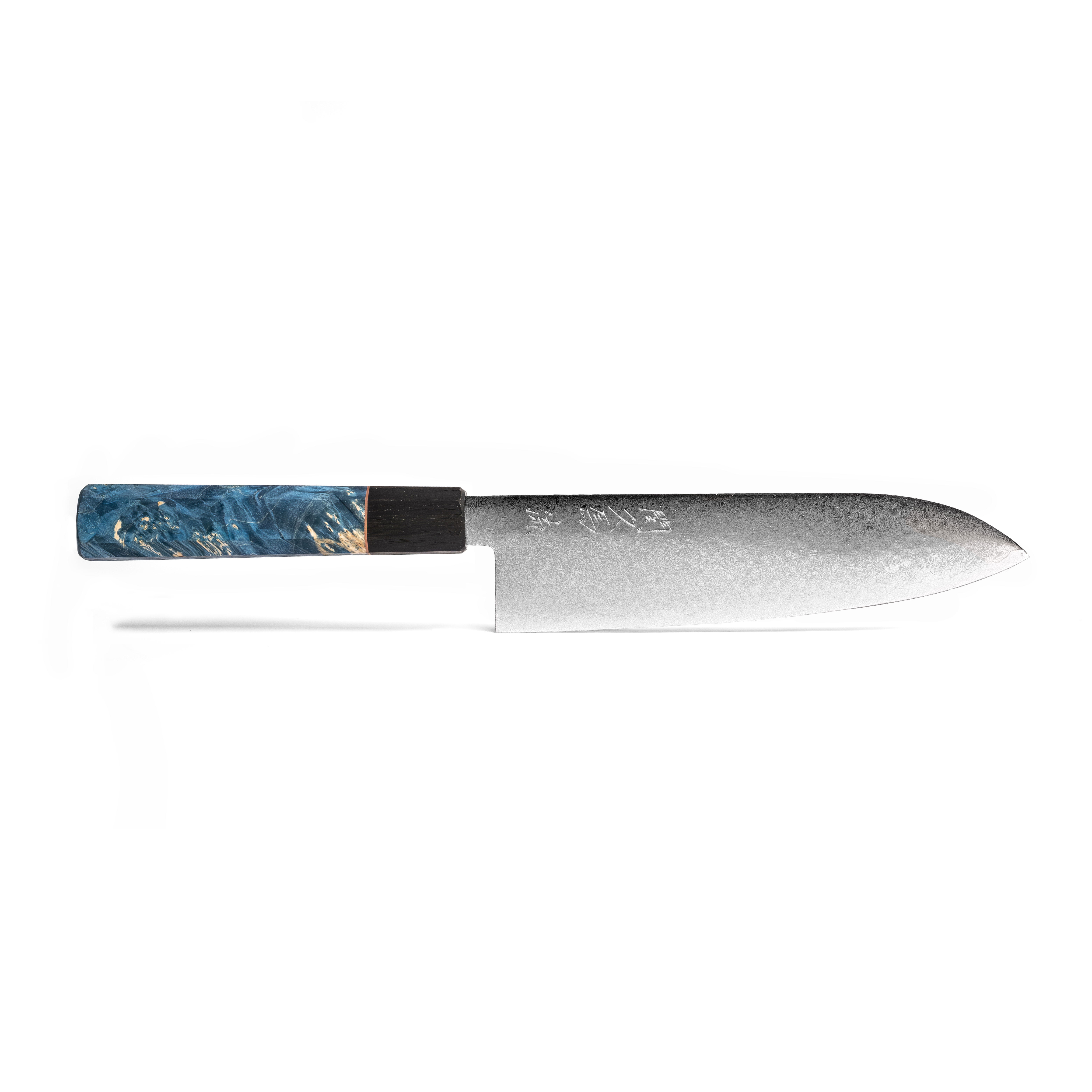Symbols and motives have always been an integral part of Japanese art, both in traditional and modern designs. Hence, there is a meaning behind each Japanese embroidery and kimono symbol.
You can find symbols at Oishya that have been subtly integrated into products. For example, our logotype is an ancient Japanese crest representing 3 geisha fans. You can spot this in multiple products, like our magnetic stand photographed below.

Japanese embroidery
Japanese embroidery, called nihon shishu, is an embroidery technique that originated in the Kofun Period more than 1,600 years ago. This Japanese technique uses intricate patterning, silken threads and symbolic motives worked on fine silk fabrics.
Embroidery was originally used for decorating items used during spiritual and religious ceremonies. Over time, it has gained popularity through widely accessible artistic initiatives. During its early stages, the finest Japanese embroidery was only reserved and available to those in the highest ranks of society. However, years of trade, migration and multiculturalism has opened this cultural heritage to a general audience to enjoy.
Kimono and its textile design meanings
If there is one thing which immediately comes to mind when one thinks of Japanese symbols applied on materials is without a doubt – a kimono. This popular clothing item is often decorated in Japanese embroidery. Early kimonos were the dominant item of clothing for aristocrats who wore them as a symbol of their status and wealth. Nowadays, kimonos are often worn by Geisha or at formal occasions such as a weddings, graduations and tea ceremonies. Because of this, the decorative motives and fabrics that embellish these garments have garnered great significance throughout history.
Therefore, we’ve prepared a guide over Japanese Kimono and textile symbols and its meanings. Find out more about this wonderful hidden language and decode the motives on modern and vintage Kimono and Obi cushions.

Floral Motives
- Bellflower (Kikyo). A five-petal flower and the symbol of a solid love, honesty and obedience.
- Cherry Blossom (Sakura). It has distinctive notched petals, it blooms briefly and is very fragile. It symbolises rebirth, new beginnings, renewal (early Spring), beauty and the transience of life.
- Iris (Kakitsubata). Signifies protection from evil spirits. It also evokes a tenth century ‘Tale of Ise’ by a running stream. Where, a far travelling poet arrives at Yatsuhashi, sees irises in full bloom and is struck by longing for his wife left in Kyoto. This longing makes him write a verse for her beginning each line with a syllable from the flower’s name ‘ka-ki-tsu-ba-ta’.
- Peony (Botan). It is the ‘King of the Flowers’ which symbolises good fortune (wealth), high honour (nobility) and timeless beauty.
- Pine Tree (Matsu). Symbolises longevity, steadfastness and wisdom in age. Also associated with winter and New Year. Sometimes represented by the pine bark diamond pattern.
- Paulownia Tree (Kiri). It is a fast growing tree with foxglove-like purple flowers and the only tree the phoenix will rise upon. Kiri is planted when a baby girl is born, the wood is then used to fashion articles for her dowry. Traditional national symbol, often seen in family crests.
- Wisteria (Fuji). Signifies love and is used for many Japanese family crests (Kamon).
- Plum Blossom (Ume). The first flower to bloom in the spring and is easily identified by rounded petals. Known as the ‘Flower of Peace’, is a protective charm against evil. Ume represents longevity, renewal and perseverance.
- Chrysanthemum (Kiku). An auspicious symbol of regal beauty, rejuvenation and longevity. It is the Imperial Seal of Japan, represents autumn and is associated with the Chrysanthemum Festival (Kiku-no-Sekku). A festival held on the 9th day of the 9th month.
Patterns
- Seigaiha. A pattern of overlapping circles, symbolic of waves and the ebb and flow of life.
- Shippo. An infinitely repeating circular design representing the seven jewels or treasures from the Buddhist Sutras.
- Hexagon (Kikko). An hexagonal pattern that mimics the markings on a tortoise’s shell. Much like the symbolism of the tortoise, Kikko signifies longevity and good fortune. Also traditional inspiration for Samurai armour designs.
- Diamonds, also known as Pine Bark Diamond Pattern –see Pine Tree (Matsu).
Other symbols
- Kujaku (Peacock). A symbol of a bird associated with love, good will, nurturing, and a kind heart.
- Cranes (Tsuru). These are believed to live for a thousand years and inhabit the land of the immortals. Symbolise longevity and good fortune. A pair represent a happy marriage.
- River (Kawa) or winding stream represents continuity and the future.
- Drum (Taiko). A drum representing joy, ivy growing over a drum (used to warn of war) signifies peace.
- Scrolls. Represent learning, knowledge and a cultured life. One of the Myriad Treasures.
- Mountains (Yama). Depict sacred places between heaven and earth. Birds flying over mountains signify overcoming life’s challenges.


































